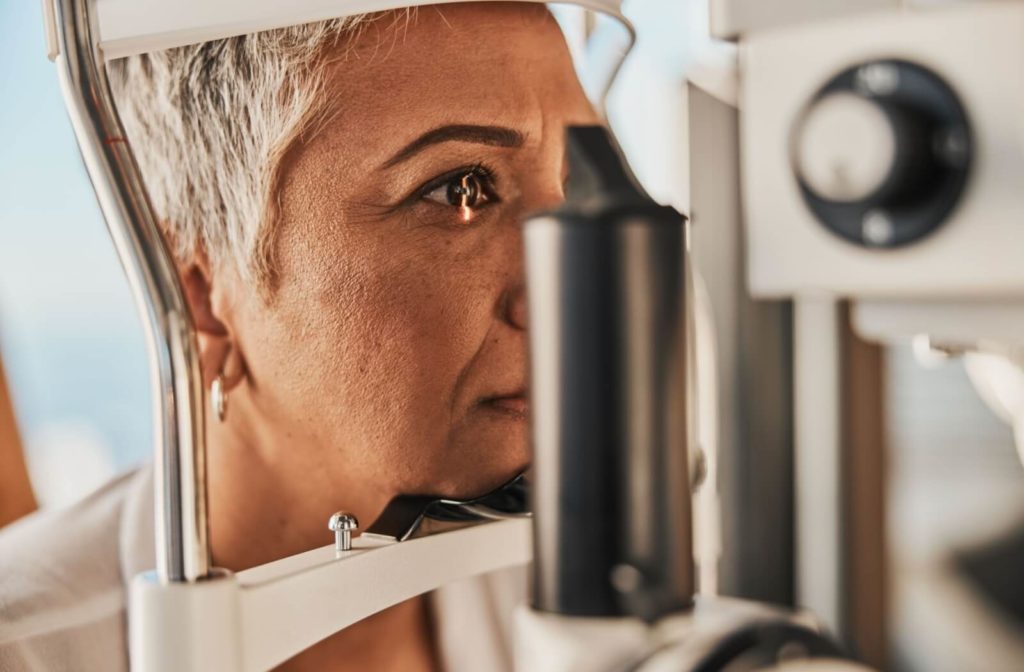If you’ve ever struggled with judging distances or felt like you’re unexpectedly stumbling through daily activities, you’re not alone. Depth perception plays a huge role in how we interact with our surroundings, and we see real world effects when we misjudge distance.
But what can we do to get better at it? And what causes these issues in the first place? Common causes of depth perception issues revolve around disturbances in the eyes, the brain, or both.
Let’s delve into the ins and outs of depth perception. Why it’s important, what might mess with it, and some tricks to help you keep your eyes healthy (including regular eye exams). And hey, sometimes you might need to call in your eye doctor for a little extra help.
Whether you’re trying to master a new virtual reality game or just aiming to catch a ball, understanding depth perception can make a world of difference.
Why Do I Struggle With Depth Perception?
Ever walked down a hallway and felt like the walls were closing in on you? That feeling of uncertainty isn’t just in your head—it’s a real struggle for some people every day.
Depth perception isn’t just about seeing; it’s a complicated process that involves your eyes and your brain working together to build a layout of the world in your mind. But when something disrupts that teamwork, it can throw everything off balance.
There are many reasons why someone might have trouble with depth perception. Sometimes it’s because of issues with the eyes themselves, like nearsightedness or astigmatism. It can also be more serious issues such as amblyopia or cataracts.
And it’s not just about the eyes—neurological problems, like optic neuritis or stroke, can interrupt how your brain interprets what your eyes see, causing a mix-up between reality and perception.
Sometimes, it’s just life getting in the way. Stress, tiredness, or staring at screens for too long can mess with your depth perception temporarily. The good news is, these things usually go away once you take a breather and give your eyes and brain a chance to reset.
The Anatomy of Depth Perception
To understand how to improve depth perception, we need to look at how our bodies work. It all starts when light enters our eyes through the cornea, travels through the pupil, and gets focused by the lens onto the retina.
Inside the retina, there are special cells called cones and rods that turn light into signals our brains can understand. These signals then travel to the brain’s visual cortex.
Now, the brain processes these signals using various clues. One big clue is using both eyes, called binocular cues. Our brains compare the images from each eye to figure out depth.
There are two main ones:
- Retinal disparity: where each eye sees things from a slightly different angle
- Convergence: where our eyes come together to focus on something up close
Our brains also use other clues, like how big something looks or how it moves, to help with depth perception.
Identifying the Culprits of Depth Perception
When your brain struggles to discern depth, it can be frustrating and potentially dangerous. But what exactly causes depth perception issues, and how can you address them? Here are the most common disruptors and their potential solutions.
Refractive Errors
Conditions like nearsightedness and astigmatism can distort how we see objects. Glasses or contact lenses are often the simplest solution, though more complex cases might need vision therapy.
Dual Vision Loss
If you suddenly experience double vision, it’s important to seek immediate medical attention. This could be a sign of a serious medical condition, such as a stroke, that requires emergency treatment.
Amblyopia (Lazy Eye)
When one eye is significantly weaker, it can mess with depth perception. Treatments involve strengthening the weaker eye through methods like eye patching or vision exercises.
Age-Related Changes
Presbyopia, an age-related loss of ability to focus on close objects, can also affect depth perception. Reading glasses can often resolve this issue by providing clear near vision.
Neurological Disorders
Treatment for depth perception issues caused by neurological conditions will vary depending on the underlying cause. In some cases, vision therapy can help retrain the brain to better interpret visual cues.
How to Enhance Your Depth Perception
Improving your depth perception isn’t difficult, but it does require effort and potentially the guidance of a professional eye doctor.
Vision Exercises
Your eye doctor might suggest exercises to train your eyes and brain together. These could include focusing on objects at different distances or playing 3D games.
Lifestyle Adjustments
A balanced, healthy lifestyle can support overall good vision, which can indirectly enhance depth perception. Regular exercise and a diet rich in vision-supporting nutrients are essential.
Ergonomic Environment
Making your workspace eye-friendly matters. Reduce screen glare, ensure proper lighting, and take breaks to give your eyes a rest.

Knowing When to Seek Help
Knowing when to seek professional help is vital when it comes to improving depth perception. If home remedies aren’t doing the trick or if you notice signs of more serious issues, it’s time to reach out to your optometrist at Seal Beach Eyes.
We can conduct a thorough eye exam to find the root cause of your depth perception issues. Visual acuity tests can also help determine the extent of the problem. Based on the results, we will craft a treatment plan tailored to your needs.
If you’re struggling with at-home methods or suspect something more serious, don’t hesitate to book an eye exam at Seal Beach Eyes. It could be the first step toward clearer, more confident vision.




